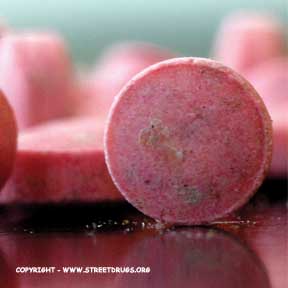
D-lysergic acid diethylamide (LSD) is the most potent hallucinogenic substance known
to man. Dosages of LSD are measured in micrograms, or millionths of a gram. By comparison,
dosages of cocaine and heroin are measured in milligrams, or thousandths of a gram.
Compared to other hallucinogenic substances, LSD is 100 times more potent than psilocybin
and psilocin and 4,000 times more potent than mescaline.
LSD is classified as a Schedule I drug in the Controlled Substances Act of 1970.
As a Schedule I drug, LSD meets the following three criteria: it is deemed to have
a high potential for abuse; it has no legitimate medical use in treatment; and,
there is a lack of accepted safety for its use under medical supervision.
The effects of LSD are unpredictable. They depend on the amount taken, the user's
personality, mood and expectations, and the surroundings in which the drug is used.
Usually, the user feels the first effects of the drug 30-90 minutes after taking
it. These effects include dilated pupils, higher body temperature, increased heart
rate and blood pressure, sweating, loss of appetite, sleeplessness, dry mouth, and
tremors. Sensations and feelings change much more dramatically than the physical
signs. The user may feel several different emotions at once or swing rapidly from
one emotion to another. Depending on the dose, the drug can produce delusions and
visual hallucinations, which can be frightening and cause panic. Users refer to
their experience with these acute adverse reactions as a "bad trip," and the effects
typically last for about twelve hours. Terrifying thoughts and feelings, fear of
insanity and death, injuries, and fatal accidents have occurred during states of
LSD intoxication. Anyone can experience a bad trip and there is no way to predict
what your own experience will be.